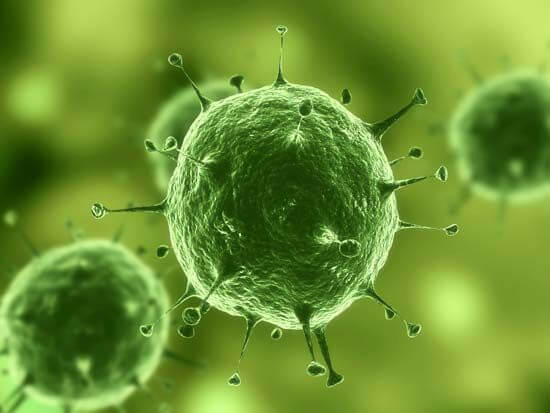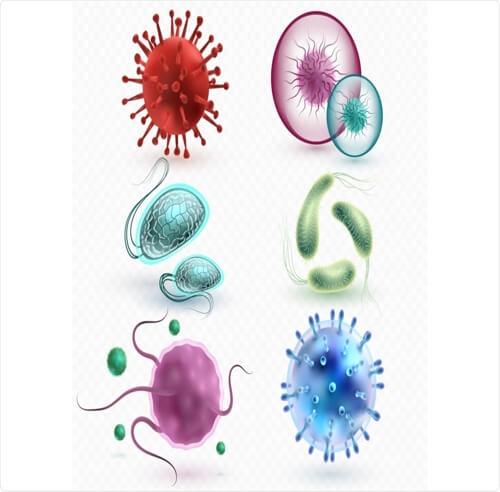Microorganism DefinitionMicroorganisms are tiny living organisms that are invisible to the naked eye. They are the simplest and most primitive form of life on earth, but despite their small size, they are incredibly diverse and play important roles in the ecosystem. Microorganisms include bacteria, viruses, fungi, protozoa, and algae, and they can be found in every habitat on earth, from the deepest oceans to the highest mountains. 
The term "microorganism" is often used interchangeably with "microbe" or "germ." While these terms are all used to refer to the same type of organism, they have slightly different connotations. "Microbe" is a more general term that encompasses all types of microorganisms, while "germ" is often used to refer specifically to harmful microorganisms that can cause disease. HistoryThe study of microorganisms, also known as microbiology, has a long and fascinating history that spans thousands of years. Microorganisms are microscopic organisms such as bacteria, viruses, fungi, and protozoa, that are found in almost every environment on Earth. They are incredibly diverse and have a profound impact on the planet and all life forms that inhabit it. The earliest recorded observations of microorganisms date back to ancient civilizations such as the Egyptians, Greeks, and Romans. These civilizations were aware of the existence of tiny living organisms, but they lacked the technology and scientific methodology to properly study and understand them. It wasn't until the invention of the microscope in the 17th century that scientists were able to truly begin exploring the world of microorganisms. One of the earliest pioneers of microbiology was Anton van Leeuwenhoek, a Dutch scientist who was the first to observe bacteria and protozoa under a microscope. In the late 17th and early 18th centuries, other notable scientists such as Robert Hooke and Louis Pasteur further advanced the field by developing techniques to study and classify microorganisms. In the late 19th and early 20th centuries, microbiology really took off as a scientific discipline. This was due in large part to the work of scientists such as Ferdinand Cohn, who was instrumental in developing the field of bacteriology, and Sergei Winogradsky, who helped establish the field of environmental microbiology. During this time, researchers also made significant breakthroughs in understanding the role that microorganisms play in infectious diseases. For example, Louis Pasteur's work on the germ theory of disease revolutionized medicine and led to the development of vaccines and other treatments for infectious diseases such as smallpox and rabies. The study of microbiology continued to evolve throughout the 20th century, with advances in technology allowing scientists to gain an even deeper understanding of microorganisms and their functions. For example, the discovery of DNA and the development of genetic engineering techniques have allowed researchers to manipulate microorganisms for a wide range of purposes, including the production of antibiotics, vaccines, and biofuels. Types of MicroorganismThere are several different types of microorganisms, each with their unique characteristics and functions. In this article, we will explore the various types of microorganisms and their significance. 
BacteriaBacteria are single-celled organisms that are found in almost every environment on Earth. They are incredibly diverse, with an estimated 10 million different species, and can be found in soil, water, air, and even within the human body. While some bacteria are harmful and can cause disease, others are beneficial and play an essential role in maintaining the health of ecosystems and human bodies. Some examples of beneficial bacteria include those that live in our digestive system, helping us break down food and absorb nutrients. Other bacteria are used in the production of food and beverages such as cheese, yogurt, and beer. ArchaeaArchaea are a group of single-celled organisms that are similar to bacteria but are genetically distinct. They are often found in extreme environments such as hot springs, hydrothermal vents, and salt lakes. Archaea are essential for maintaining the health of these environments, as they play a critical role in cycling nutrients and breaking down organic matter. FungiFungi are a diverse group of organisms that include yeasts, molds, and mushrooms. They are found in almost every environment on Earth, including soil, water, and air. Fungi play an essential role in the ecosystem, as they help break down dead organic matter and recycle nutrients. Some fungi are also used in the production of food and beverages, such as bread, beer, and cheese. However, some types of fungi can be harmful to humans, causing infections such as ringworm and athlete's foot. ProtozoaProtozoa are single-celled organisms that are found in soil, water, and other environments. They play an essential role in maintaining the health of ecosystems, as they help cycle nutrients and break down organic matter. Some protozoa are also known to cause disease in humans, such as the parasite that causes malaria. However, many other types of protozoa are beneficial, such as those that live in the digestive system of cows and help break down cellulose in plants. VirusesViruses are tiny, non-living organisms that can infect living cells and cause disease. They are not technically considered living organisms, as they cannot reproduce on their own and rely on a host cell to replicate. While some viruses can be harmful to humans, causing diseases such as the flu and COVID-19, others are beneficial. For example, viruses are used in gene therapy, where they are used to deliver therapeutic genes to treat genetic disorders. AlgaeAlgae are a diverse group of photosynthetic organisms that are found in aquatic environments such as oceans, lakes, and rivers. They play an essential role in the ecosystem, as they are the base of the food chain for many aquatic organisms. Some types of algae are also used in the production of food and beverages, such as spirulina, which is a type of blue-green algae that is high in protein and other nutrients. PrionsPrions are a unique type of infectious agent that is made up of protein. They are known to cause diseases such as Creutzfeldt-Jakob disease and mad cow disease. Prions are unique in that they do not contain genetic material such as DNA or RNA. Instead, they are able to replicate by converting normal proteins into abnormal prion proteins. Uses of Microorganism
In conclusion, microorganisms have a wide range of uses that make them essential to human life. From food production to medicine and environmental management, microorganisms are involved in many aspects of our daily lives.
Next TopicMonsoon Definition
|
 For Videos Join Our Youtube Channel: Join Now
For Videos Join Our Youtube Channel: Join Now
Feedback
- Send your Feedback to [email protected]
Help Others, Please Share










